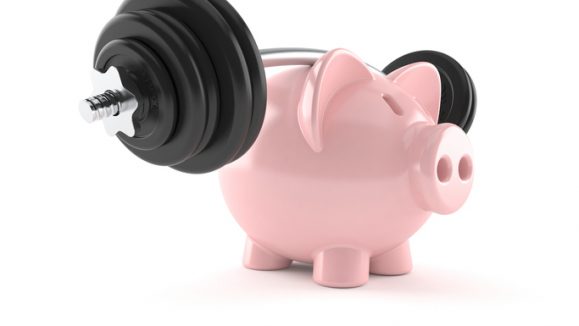It should come as no surprise that the COVID-19 pandemic has left almost all sectors of the economy hurting, and the ophthalmic industry is no different. Indeed, all through supply and demand chain, cash flow considerations are having a deep impact on business. Patients are undergoing fewer operations, ophthalmologists are spending less on equipment, and medical suppliers are having to scramble for options. What to do?
To discuss this situation, we turned to Dr. Arun Gulani, founder of the Gulani Vision Institute in Jacksonville, Florida, and Dr. Manish Nagpal, vitreoretinal consultant at the Retina Foundation in Ahmedabad, India to get their take on the matter.
No Incoming Cash? Your Outgoings Don’t Stop
Just because clinics or hospitals don’t have patients coming in doesn’t mean their costs disappear. Overhead remains, no matter the case: Hospital staff must be paid, electricity has to stay on, equipment needs to be maintained, and so on.
Dr. Nagpal explained the problem: “Hospitals are basically like daily wage earners. Only if there is a patient flow, then there are diagnostics done, treatments given, and surgeries performed. That is what maintains the logistics of running the place.”
Once COVID-19 hit, however, the usually tenable balancing act hospitals face was challenged. Describing the impact of the disease, Dr. Nagpal said: “Suddenly everything incoming stops. But outgoing does not stop. Each hospital has significant staff required to maintain and run the place, and of course doctors who are working in various capacities.”
It’s easy to overlook “minor” costs of running a hospital, but they’re very real and they add up quickly. Besides salaries for doctors, nurses and staff, from cleaners to maintenance workers, a host of other expenses present themselves. These costs include air conditioning, fuel for generators, overhead and unexpected expenses of all kinds, loans, equipment rentals or servicing contracts, supply purchases, and more.
The same is true for clinics — a problem of equal magnitude but of smaller scale. Dr. Gulani noted that doctors, their families and staff will all be affected by cash flow issues. Many have mortgages to pay, rent for their facilities, or loans to service. Because nobody knows the timeline — unless someone out there has a crystal ball they’d like to share — nobody can make solid plans for their financial future at the moment.
Looking After Each Other
It’s not all gloom, however. Across the board, individuals and corporations alike are taking this opportunity to help those in need — which in this case is a whole lot of people.
Dr. Gulani noted that doctors will need to be understanding of patients’ difficulties in paying for treatment in the future. He suggested allowing longer payment terms, reducing costs, or even doing procedures at cost for patients in need who cannot afford to pay. He pointed out that patients’ desire for medical treatment will stay the same, while their abilities to do so will diminish — and doctors should do what they can to help.
Similarly, doctors and hospitals should strive to pay staff as best as they can — and, as they’re higher income earners, doing so may require doctors to absorb some of the losses. Dr. Gulani suggested that doctors should realistically be able to ride out six months without income, and should be able to pay their staff as well. A pause in business will give doctors the opportunity to see if they’re overstaffed and assess the state of their finances. In terms of financial health, he said, this is an opportunity to get your house in order and come out shinier in the future.
Doctors rely on their staff, of course, and many are doing their best to support them. As Dr. Nagpal puts it, “Once there is no income, one still has to try and pay as much as possible to the lower and middle segment of staff. The higher bracket may be requested to share some of the loss as we need to protect the jobs and incomes of the lower income group.”
He gave specifics: “Once work totally stopped from March 21st onwards, we thought that we would give full salaries to all staff for the month of March, even though there was no income for a quarter of that month.” He continued: “Then the lockdown got extended to three weeks and we were staring at half of April with no income and how to manage the salaries. As we stand today, we are looking down at least until May 3rd; hence there is no income for the month of April, and we are already sliding into no income for part of May. Thus, the cash crunch is going to increase as we speak.”
Ophthalmic Companies and Cash Crunch: Doing the Right Thing
Since the cash crunch is climbing all the way up the financial totem pole, it comes as no surprise that manufacturers are affected as well.
Dr. Gulani suggested that medical device and pharmaceutical companies do the same thing for doctors that doctors can do for patients. Namely, they can lower prices, offer special deals, sell necessities at cost, and essentially take some of the pressure off — all in the name of a greater good and shared burden.
As the aphorism goes, many hands make light work.
Some companies are already heeding the call. ZEISS India, for example, has begun offering a Mutual Benefit Program for ophthalmologists. The program is designed to help doctors by providing them with the equipment they need while helping ZEISS out with its short-term cash flow issues. It looks like a win-win scenario, and it’s the kind of move that will keep the industry on its feet and ready to bounce back.
This, Too, Shall Pass
Despite all the bad news, people are getting a chance to explore their own sense of charity and kindness. As Dr. Gulani noted, this is an opportunity for people to withdraw into themselves so they can come back wiser, more introspective, and more caring.
Dr. Nagpal was somewhat less sanguine in his short-term outlook. “This is an exceptional situation and one takes little relief in knowing that this affects the whole world and it’s not just you in the picture,” he said. “We have to wait this period out with masterly inactivity, try to balance the whole equation, and take in the losses with the hope that this too shall pass and there will be better days that would creep in . . . and someday we shall all look at this as a bad dream.”





